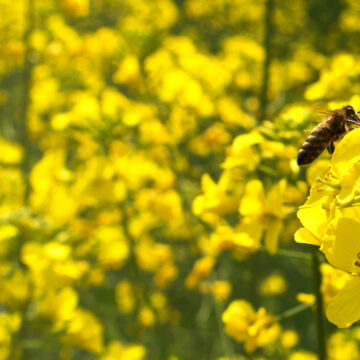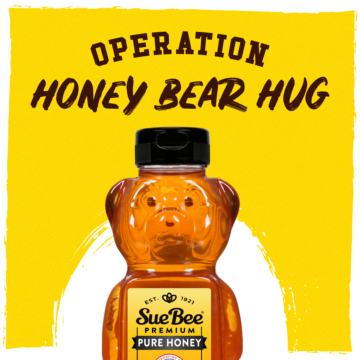You Feeling OK, Honeybee?
We should all be concerned about the health of the American honeybee
Honeybees aren’t on life support. Yet. But their health is under constant supervision from concerned honeybee advocates and beekeepers, including the 200+ Sioux Honey Co-op members.
In the United States, the treasured, honey-making insects have been in a recovery mode of sorts since 2006 when the mysterious Colony Collapse Disorder (CCD) began in earnest. Despite exhaustive research and dedicated projects to deciphering the cause of CCD, the sudden disappearance and deaths of entire hives overnight remains a mystery.
But what’s not unknown are several other reasons why the honeybee – which we rely on to pollinate 71 of the 100 crops that provide 90% of the world’s food – continues to die at an alarming rate. Currently, the Bee Health Collective – a collaboration of stakeholder organizations that gather and share current, credible information about honeybee health – estimates that 40% of honeybee colonies in the U.S. die each year.
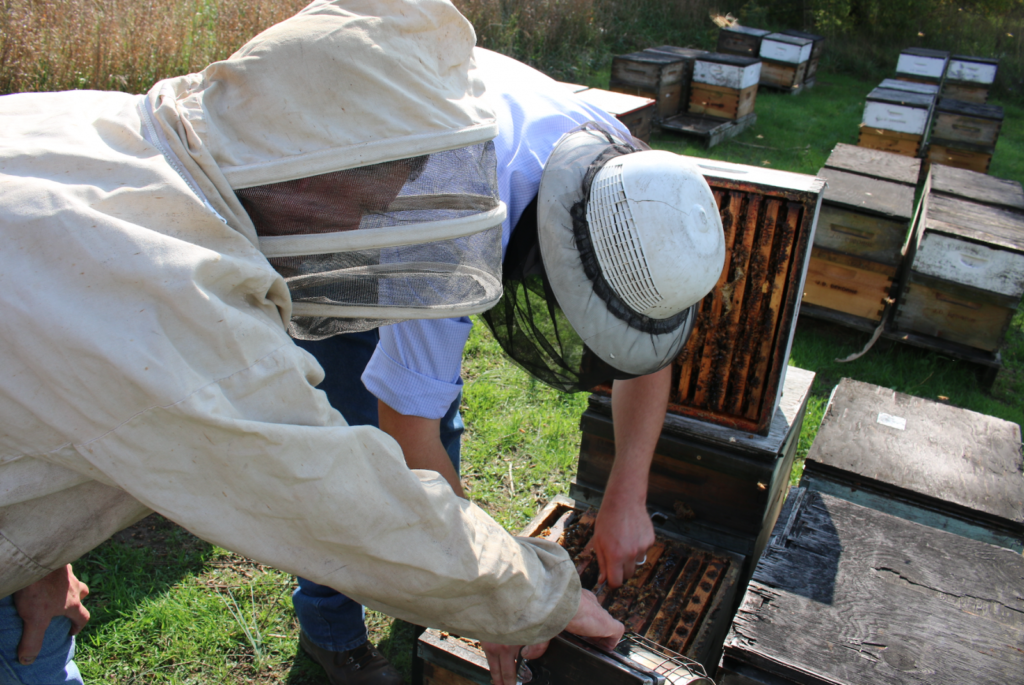
Those reasons include what the collective calls the ‘Four P’s’:
- Parasites – The honeybee’s No. 1 predator is the varroa mite, tick-like creatures that attach themselves to honeybees and can destroy entire colonies. It’s like a tick on a human that’s the size of a dinner plate.
- Pathogens – Bees encounter viral, bacterial and fungal pathogens that can have serious impacts on colony health and survival. Some of these pathogens are highly contagious on their own, and others can also be spread by the varroa mite.
- Poor nutrition – Honeybees and native pollinators are literally “losing ground” as agricultural land use expands. Corn and soybeans are the two monoculture crops that use the most land in the U.S.
- Pesticides – From agriculture to home gardens and lawn use, honeybees encounter these weed-killing chemicals in many places.
Other reasons for death among the honeybee population:
- Loss of biodiversity due to circumstances like climate change.
- Destruction of habitats that offer shelter for bees via forest fires, floods, tidal surges from hurricanes, and other natural disasters.
- Small hive beetles, another destructive pest.
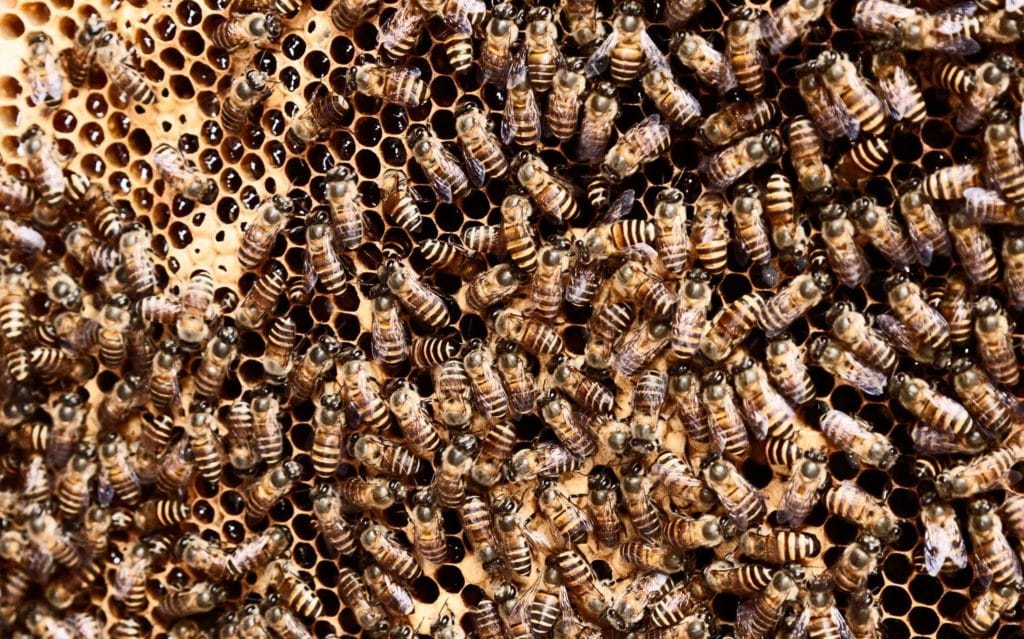
As we’ve mentioned in previous blog posts in our honeybee sustainability series (“Wait! Don’t Throw Away That Honey Bottle,” “The Honeybee Stewards,” “Sustaining Sustainability” and “Priceless Pollination”), Sioux Honey beekeepers – along with other commercial beekeepers – have been keeping up with the losses by helping create new hives through the “splitting” of healthy hives. Beekeepers take a portion of an established colony and transfer it to a separate hive nearby and, thus, create two colonies from one.
In the most recent report from the United States Department of Agriculture (USDA), the number of honeybee colonies for beekeepers with more than five or more colonies was up 2% year-over-year in January 2021 compared to January 2020, with a total of 2.92 million honeybee colonies in the United States.
The USDA tracks the number of honeybee colonies lost and the number that was added each quarter, and beekeepers’ additions consistently outpace the numbers lost. The most recent quarter showed a significant gain for the honeybee population in the U.S. between April 2021 and June 2021 – 255,860 colonies were lost. However, beekeepers more than doubled the losses by adding 677,690 new colonies. Thank goodness for Sioux Honey and other beekeepers. While other insects, like butterflies, provide pollination services, it’s the honeybee that pollinates the most foods we consume – more than 130 different fruits and vegetables. In the U.S. alone, honeybees pollinate an estimated $15 billion worth of crops every year.
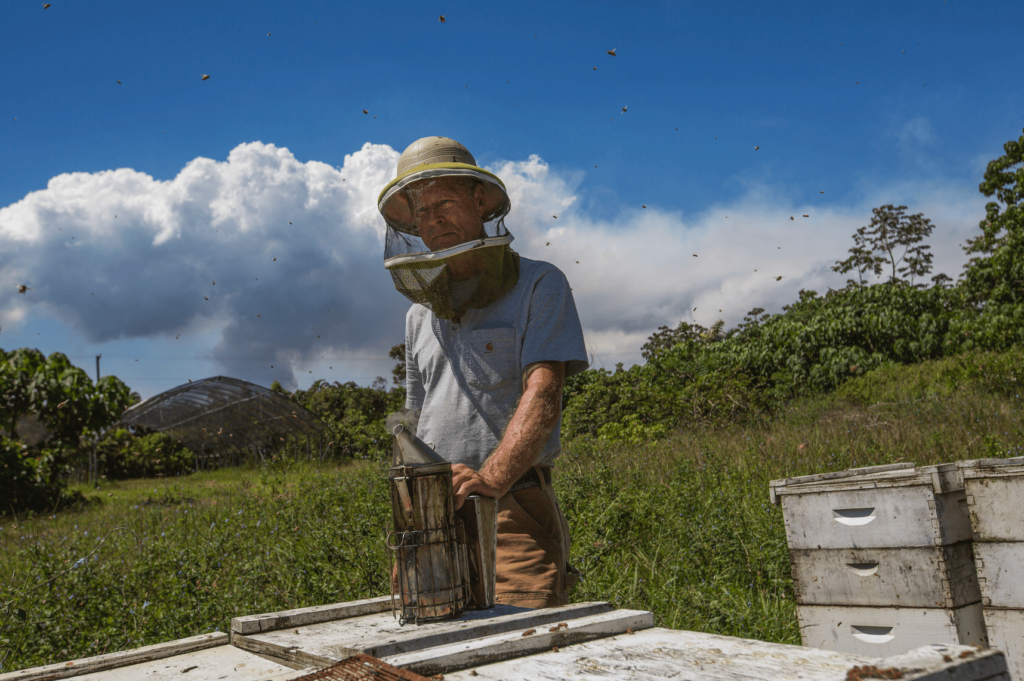
Creating a ‘super bee’
In addition to creating new hives of honeybees, beekeepers are also leading the charge to create new strains of honeybees that are stronger and able to naturally defend themselves against predators like the varroa mite. One of those people is Sioux Honey beekeeper David Thomas who lives in Keaau, Hawaii and runs bees on the Big Island, as well as in his home state of Louisiana. David is at the center of a groundbreaking project called the Hilo Bee Project, which is a public-private partnership developed with the USDA, Project Apis m., and David’s honey operation, the Hawaii Island Honey Company.
Combining breeding tools and expertise in a commercial beekeeping operation, these partners have been working to develop a honeybee that is naturally resistant to varroa mites with traits to be successful in commercial beekeeping. Those traits include being able to produce comparable amounts of honey compared to non-varroa-resistant honeybees and being docile and unaggressive in manner.
David built the research laboratory at his honeybee operation in Keaau and every one of his 6,500 hives (about 260 million honeybees spread across the Big Island) include queens that have been bred from the project.
“Honey production is good, and the bees are doing quite well,” says David. “The work is progressing well, and our bees are resisting the varroa mite, so we’re hoping to keep testing these bees and working on making them available to more commercial beekeepers.”
So far, the project to create the ideal varroa-resistant queen honeybee has resulted in the distribution of 30,000 production queens for use by 20 commercial beekeepers.
“The ongoing breeding project in Hilo remains hopeful,” says Danielle Downey, executive director at Project Apis m. (PAm). “And PAm is funding some projects that may deliver new ways to use organic acids to treat mites.”
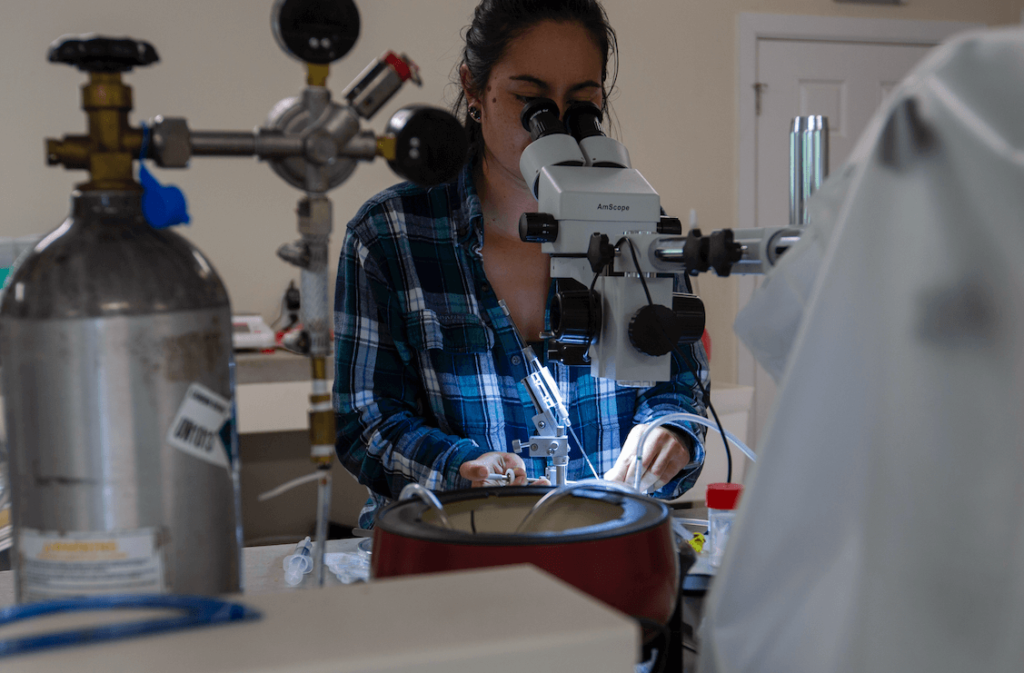
Project Apis m. is a non-profit that funds research and efforts to improve honeybee health and vitality. The organization’s name comes from Apis mellifera, the scientific name for the honeybee. Currently, PAm has more than 40 active research projects, and every one of them has the ability to make a major difference for beekeepers.
Another ray of hope, says Downey, is “our efforts to replace forage on the landscape. We passed 55,000 acres this year, but we really hope to see that decimal move. The programs offer free seed and technical guidance to land managers and growers who want to plant for bees.”
Project Apis m. provides free and subsidized seed mixtures and seeds to support honeybee health in California through the organization’s “Seeds for Bees” program,” which encourages the use of cover crops to increase the density, diversity and duration of bee forage in California orchards, farms and vineyards, while improving soil health. The seed mixes available through Seeds for Bees are designed to bloom at critical times of the year when natural forage is scarce but managed and native bees are active.
Want to help create your own little patch of forgeable land for honeybees? If you are able and have the space, create a honeybee-friendly garden. Planting flowers and plants that honeybees, butterflies and other pollinators can forage not only helps sustain the honeybee, it also adds colorful, natural beauty to a yard. It’s a win-win. And here are five tips to get you started.

